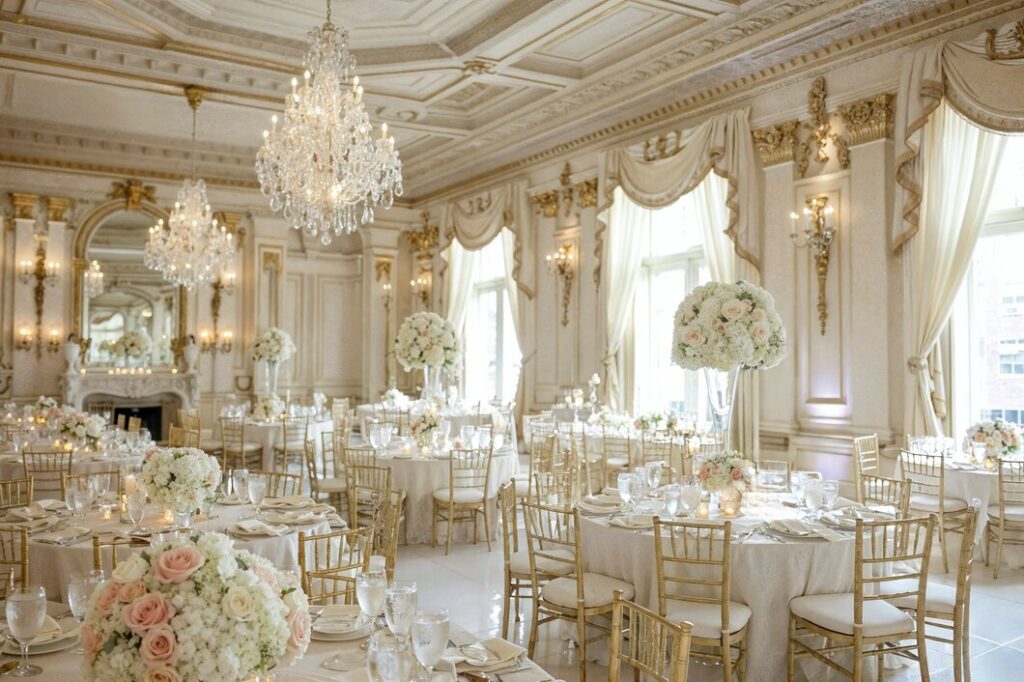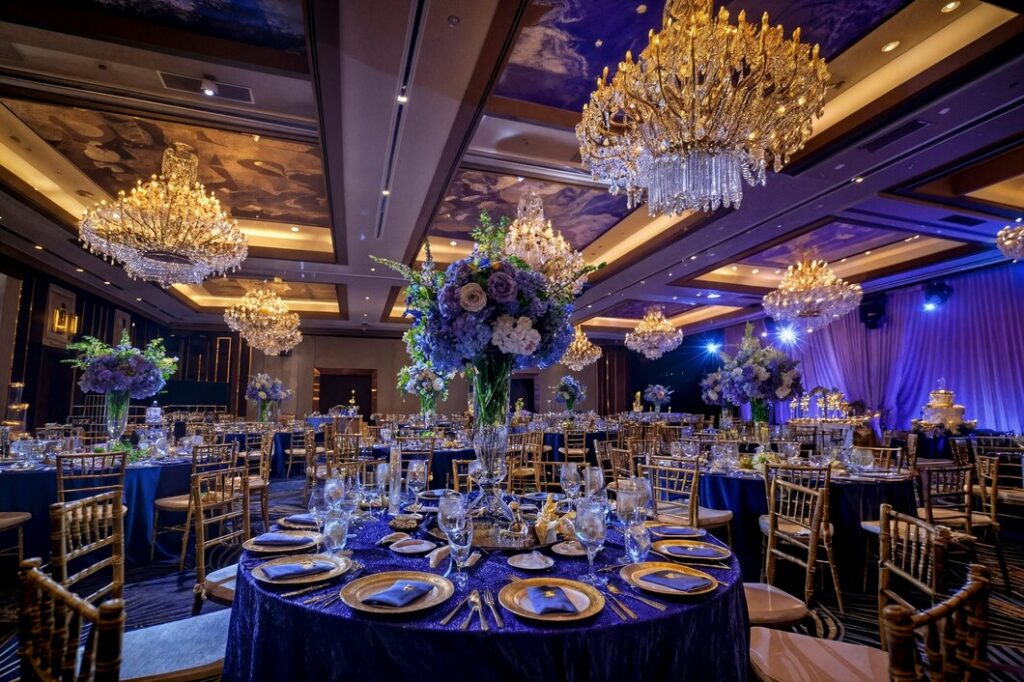The world of event design has undergone a dramatic evolution over the years. As society evolves, so do the trends, techniques, and technologies that shape the way we celebrate. From intimate gatherings to grand corporate events, event design continues to adapt to the changing needs, aesthetics, and expectations of clients and guests alike. Understanding these changes provides valuable insight into where event design is headed and how professionals can stay ahead of the curve.
The Early Days of Event Design: Simplicity and Functionality
In the early days of event planning, the primary focus was on functionality over aesthetic appeal. Celebrations like weddings, corporate gatherings, and birthday parties were centered around fulfilling a specific purpose — whether it was celebrating a milestone or commemorating a special occasion. The design elements were minimal, often featuring basic decorations like balloons, flowers, and banners.
Events were more about community, simplicity, and gathering together. Spaces were often decorated with little more than a few floral arrangements, hand-made signs, and simple seating arrangements. Hosts prioritized food and entertainment, with little emphasis on transforming the space into an immersive experience.

However, even in these simpler times, the seeds for more elaborate event decor were planted, especially as events like royal weddings or high-society parties were broadcasted through print media, giving people a glimpse into more extravagant celebrations.
The Rise of Professional Event Designers
By the mid-20th century, professional event designers began emerging as a distinct field, and the focus shifted from basic decorations to crafting entire experiences. Inspired by glamorous events of celebrities, socialites, and high-profile figures, more people started expecting their events to look and feel unique.
At this point, events started to move away from generic setups. Customization became a key factor as event planners and designers collaborated to deliver tailored experiences for each client. Themed events grew in popularity, with every aspect from invitations to table settings and lighting reflecting the chosen theme.
Floral arrangements became more intricate, lighting design more intentional, and venue transformations became the norm. The rise of rental services made it possible to access a broader range of design elements, from linens and tableware to arches, draping, and decorative props.
Technology’s Impact on Event Design: The Game Changer
The introduction of technology into the world of event design marked a pivotal moment in its evolution. Technology has not only changed how events are planned but also how they are executed and experienced.
Lighting and Visual Effects
One of the earliest and most significant changes came in the form of lighting technology. What was once a simple function of illuminating a space has evolved into a sophisticated art form. LED lighting made it possible to have customizable colors and dynamic lighting designs that could change throughout an event. This led to projection mapping, where designers could project images or video onto walls, ceilings, and even tables, creating an immersive visual experience.

Sound and Music Integration
As event design became more complex, sound design also played a bigger role. Gone are the days when a DJ and speakers were enough. Now, soundscapes are meticulously designed to fit the mood, with professional sound engineers often employed to ensure that the acoustics of a space enhance the experience. Music is curated to flow with the event’s timeline, from soft background tunes during cocktail hour to high-energy beats on the dance floor.
Augmented and Virtual Reality
The rise of augmented reality (AR) and virtual reality (VR) is taking event design to the next level. These technologies allow guests to interact with their surroundings in a more immersive way. For example, guests can use AR apps to see how certain design elements come to life or use VR to experience venues and decor layouts before the actual event.
Sustainability and Eco-Friendly Event Design: A Growing Demand
In the last decade, the increasing awareness of environmental issues has had a significant impact on the way events are designed. Sustainable event design has emerged as a growing trend, with clients seeking ways to make their celebrations more eco-friendly.
More and more event designers are turning to sustainable materials, such as reusable decor, eco-friendly floral arrangements, and even biodegradable tableware. Venues are also adopting green energy solutions, such as solar power, to reduce the carbon footprint of large-scale events.
Clients are now more conscious of waste reduction, seeking out vendors who offer sustainable options for everything from catering to furnishings. Repurposed materials, such as vintage decor, are not only eco-friendly but also offer a unique and stylish alternative to traditional event designs.
Personalization is Key: The Age of Customization
Today’s event design is all about creating personalized experiences. Whether it’s a wedding, birthday, or corporate gala, clients want events that reflect their individual tastes, values, and stories. Customization has become the norm, and event planners are expected to deliver bespoke elements that make the event truly unique.

This shift towards personalization is evident in every aspect of event design. From custom monograms projected onto dance floors to tailor-made floral designs that reflect the couple’s favorite colors or corporate branding, today’s events are designed to be a personal reflection of the host.
Clients now have more access to design inspiration thanks to platforms like Pinterest and Instagram, which have become essential tools for sharing and gathering ideas. These platforms have also pushed event designers to stay creative and innovative, as clients are constantly exposed to the latest trends and expect their events to be Instagram-worthy.
What’s Next in Event Design?
As the world continues to evolve, the future of event design promises even more innovation. Here’s a look at what’s next for the industry:
Minimalism with a Touch of Luxury
While grand and elaborate designs have been popular in the past, the future is leaning towards minimalism—but with an added touch of luxury. Expect to see sleek and modern designs with high-end materials, clean lines, and minimalist color palettes. This “less is more” approach creates an air of sophistication while keeping the event chic and uncluttered.
Interactive Experiences
The future of event design is highly interactive. Guests are no longer content to be passive observers—they want to engage with the environment and have a hands-on experience. Interactive installations, such as photo booths with live social media feeds, VR zones, and experiential decor, will continue to grow in popularity.

AI and Automation
Artificial intelligence (AI) and automation are set to play a larger role in how events are designed and executed. From AI-driven guest list management to automated decor systems that change in real-time based on the mood of the event, these technologies will make event design smarter and more efficient.
Virtual and Hybrid Events
The rise of virtual and hybrid events, spurred by the pandemic, will continue to influence event design. Event planners will need to find ways to create cohesive designs that work both in-person and virtually. This may include designing stages and backdrops that translate well on camera or using technology to make virtual guests feel as engaged as those attending in person.
Sustainability Becomes the Standard
As sustainability becomes a bigger priority for clients, we can expect to see eco-friendly designs become the norm rather than the exception. Event designers will need to integrate sustainability into every aspect of their planning, from sourcing materials to waste management.
Conclusion: The Constant Evolution of Event Design
The evolution of event design has been nothing short of extraordinary. From simple gatherings to elaborate productions that merge technology and creativity, the industry has transformed dramatically. As we move forward, we can expect even more exciting innovations in sustainability, personalization, and technology. For those in the industry, staying ahead of these trends is crucial to ensuring that every event leaves a lasting impression.
Caroline Mureithi founded Swanky Events in 2016 with a passion for creating unforgettable experiences through exquisite event planning and decoration. Based in Portland, Oregon, Swanky Events specializes in weddings, corporate events, fundraisers, and social gatherings. Caroline and her team are dedicated to turning visions into reality, ensuring every detail exceeds expectations. Visit our Facebook Page.

